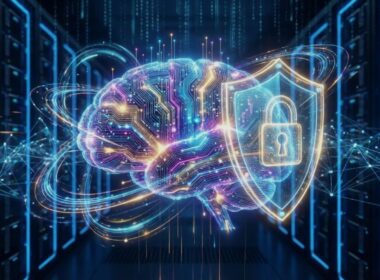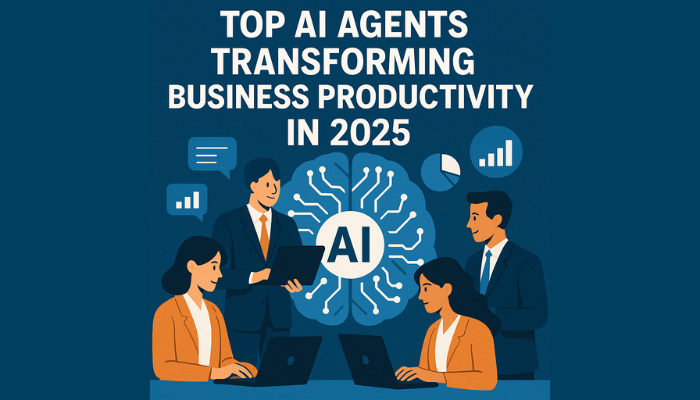The artificial intelligence (AI) revolution has changed businesses significantly in the last couple of years. Think of planning, operations, generating invoices, creating marketing strategies, or anything required to run a business; AI is there. Time taken in every task is reduced remarkably. What if we think of multiple AI models here? Yes, we’re talking about the new wave of innovation that promises to push boundaries even further, i.e., multi-agent AI systems or Agentic AI.
Now imagine not just one AI tool helping you, but a team of AIs, each with a specific role, working together to get things done faster and smarter. That’s what multi-agentic AI (or Agentic AI) is all about. These systems use multiple AI agents that can plan, communicate, and collaborate with each other to handle complex tasks, like coordinating deliveries, responding to customer queries, or managing large projects.
In this article, let’s understand what these multi-agent AI systems are capable of and how they impact your business and forge a path for the future of AI.
What is Multi-Agentic AI?
Multi-agent AI refers to systems where multiple autonomous agents, often referred to as “AI agents,” work together to solve problems, make decisions, or accomplish tasks. These agents operate independently but communicate and collaborate with one another, sharing information to optimize overall system performance. Essentially, it’s an evolution of AI, where instead of a single agent performing tasks, a network of agents works in tandem to achieve a common goal.
Difference Between Multi-Agentic AI & Single-Agent AI Systems
AI systems can be classified into two broad categories based on how tasks and decision-making are distributed: Multi-Agentic AI and Single-Agent AI. These two approaches differ significantly in their structure, capabilities, and applications. Here is a detailed view of their differences.
| Feature | Multi-Agentic AI | Single-Agent AI |
| Number of Agents | Involves multiple agents working together to solve tasks or make decisions. | Relies on one central agent to handle all tasks and decision-making. |
| Control | The system is decentralized, meaning no single agent has total control. Each agent operates independently but works toward a shared goal. | The system is centralized, with one agent controlling all operations and decision-making. |
| Collaboration | Agents collaborate and communicate with each other, sharing information to optimize performance and achieve a common goal. | There is no collaboration between agents; the single agent operates alone. |
| Complexity Handling | Multi-agent systems are designed to handle complex, multi-faceted problems by distributing tasks among agents, improving problem-solving capabilities. | Single-agent systems may struggle with complex problems, as the agent handles all aspects of the task alone. |
| Scalability | These systems are highly scalable. More agents can be added to distribute tasks and improve performance, making it adaptable for larger systems. | Single-agent systems have limited scalability. As tasks become more complex, the agent may struggle, leading to a decrease in performance. |
| Fault Tolerance | Multi-agent systems are more resilient. If one agent fails, the remaining agents can continue functioning, ensuring minimal disruption. | Single-agent systems are more vulnerable. If the agent fails, the entire system may stop working, as there are no backup agents. |
| Task Specialization | Different agents in a multi-agent system can specialize in various tasks or aspects of the problem, enabling more efficient solutions. | A single agent handles all tasks, which may limit the system’s ability to specialize or optimize for complex tasks. |
| Adaptability | Multi-agent systems are adaptable. Agents can adjust to changing environments and feedback, improving their effectiveness over time. | Single-agent systems are less adaptable. The agent can only adapt within the limitations of its programming and predefined constraints. |
| Resource Allocation | In multi-agent systems, resources can be distributed and allocated among agents, improving overall efficiency and resource use. | Single-agent systems have limited ability to allocate resources, which can become a bottleneck as demand increases. |
Role of Multi-Agent Systems in Collaborative Work
One of the most significant benefits of multi-agent AI systems is their ability to work collaboratively and provide checks and balances. This means that these systems are not just performing tasks in isolation but are also capable of managing and overseeing each other’s actions. Think of it as a team of agents with specialized skills working together to manage complex workflows and ensure that no task is overlooked or mismanaged.
This collaborative approach helps businesses reduce errors, increase productivity, and manage tasks more efficiently. Agents can autonomously interact with one another, resolve conflicts, and adjust their roles to meet the needs of a project, all while remaining focused on their individual tasks.
Let’s further explore the core capabilities of multi-agentic AI systems and how they can optimize your business processes.
Also Read: AI Tools for Small Businesses: Applications and Efficiency
Core Capabilities of Multi-Agent AI Systems
As mentioned earlier, multi-agent AI systems are capable of functioning autonomously. They categorize complex tasks into smaller, manageable subtasks and distribute them among specialized agents. This decentralization speeds up processes and ensures each agent focuses on tasks that align with its strengths, enhancing efficiency and accuracy.
1. Decentralized Task Management
Multi-agent systems distribute tasks across specialized agents, allowing each one to handle specific subtasks. This decentralization makes operations faster and more scalable. As tasks grow in complexity, new agents can be added, ensuring consistent performance without overloading any single unit.
For Example: Autonomous Delivery Drones
A fleet of drones independently manages tasks like pickup, navigation, and delivery. New drones can be added to handle increased demand without overloading any single unit, ensuring scalability and faster operations.
2. Seamless Collaboration Between Agents
While agents work independently, they communicate and collaborate with each other to complete complex tasks. This collaboration ensures that all parts of the project are aligned and that issues like task conflicts are resolved quickly. Agents can also cross-check each other’s work, reducing errors and improving performance.
For Example: Autonomous Vehicles in Traffic
Self-driving cars communicate with each other to optimize routes and share traffic updates. This collaboration prevents accidents and improves traffic flow by reducing conflicts and congestion.
3. Language Learning Models (LLMs) and Specialization
LLMs play a crucial role in multi-agent systems, enabling agents to process natural language, learn from data, and adapt their behavior. This capability allows agents to perform various tasks, including analyzing data and generating content while improving their performance over time. Agents can continuously learn and adjust to new information, ensuring they stay effective in dynamic environments.
For Example: AI-Based Customer Support Chatbots
Multiple chatbots specialize in different support areas (e.g., technical, billing). Powered by LLMs, they process natural language, learn from interactions, and continuously improve responses for better customer service.
4. Real-Time Decision Making
Multi-agent systems excel at real-time decision-making. Agents can analyze and process data autonomously, making decisions on the fly. This capability is especially useful in fast-moving environments like e-commerce, finance, or customer service, where quick, data-driven decisions are crucial.
For Example: Stock Trading Algorithms
AI agents analyze market data in real-time, making instant buy or sell decisions in high-frequency trading. This allows them to adapt quickly to market changes, maximizing profits in volatile conditions
5. Task Diversity and Flexibility
Thanks to their adaptability, multi-agent systems can handle a wide variety of tasks. From data processing to customer support, agents are customized to focus on specific roles, ensuring that each task is handled by the most fitting agent. This flexibility makes multi-agent systems ideal for industries that require rapid adaptation and efficiency.
For Example: Smart Factory Systems
In a smart factory, agents manage various tasks like quality control, inventory, and scheduling. Each agent is specialized but adaptable, ensuring efficiency and quick adjustments as production needs change.
Now that we have a clear idea of what multi-agent AI systems can do, let’s look at the benefits of using them more closely.
Advantages of Using Multi-Agent AI Systems
Multi-agent AI systems offer a host of advantages that can drastically improve efficiency, enhance decision-making, and streamline business operations. By automating complex tasks, customizing processes, and continuously learning, these systems provide organizations with the tools they need to stay competitive in an increasingly fast-paced world.
1. Efficiency and Task Optimization
Multi-agent AI systems enhance operational efficiency by automating tasks and breaking down complex workflows into manageable subtasks. These systems enable faster execution by handling repetitive processes without human input, freeing up resources for more strategic activities. They can scale to handle increasing workloads, ensuring consistent performance even during high demand, which makes them ideal for high-volume operations.
2. Focused and Decomposed Task Handling
Each agent in a multi-agent system focuses on specific tasks, increasing efficiency and reducing the risk of errors. By delegating subtasks to specialized agents, businesses can manage workloads more effectively. This focused approach leads to faster task completion and improves overall system performance with minimal oversight.
3. Customization for Diverse Applications
Multi-agent systems are highly adaptable, with customization options that allow businesses to modify them to specific needs. From customer service automation to complex data processing, agents can be configured to suit different business functions. These systems integrate seamlessly with existing tools, enabling businesses to automate end-to-end processes while maintaining operational continuity.
4. Continuous Learning and Adaptation
As multi-agent systems process data, they can learn and improve over time. This ability to adapt ensures that they stay effective as conditions change, such as in dynamic industries where customer preferences or market conditions fluctuate. This continuous learning helps businesses remain competitive without requiring constant reprogramming.
5. Cost-effectiveness and Resource Allocation
By automating routine tasks, multi-agent systems reduce labor costs and optimize resource allocation. This allows businesses to deploy their human workforce on high-level, strategic tasks while leaving routine work to the AI agents. This shift improves overall productivity and reduces the need for additional staffing.
6. Enhanced Decision-Making and Data-Driven Insights
Multi-agent systems excel at analyzing large datasets in real time, providing actionable insights that help businesses make informed decisions. By processing and analyzing data simultaneously, these systems offer a clearer view of market trends, customer behaviors, and business performance, enabling smarter, data-driven strategies.
7. Improved Collaboration and Conflict Resolution
Multi-agent systems are designed to collaborate, share information and adjust to each other’s actions. In cases of conflict, such as two agents attempting the same task, these systems can apply conflict-resolution protocols, ensuring smooth workflows and preventing bottlenecks.
If you’re looking for assistance in automating your business processes and are unsure where to begin, consider Codewave to develop and train AI/ML models for your business. From GenAI tools, Conversational bots, and Self-improving systems that lead to immediate, visible business impact, we’re there to handle the tedious tasks so you can focus on the primary goals of your business.
Now, let’s move ahead and look at the basics of building a multi-agentic AI system.
Also Read: Why Data Needs to be at the Forefront of Your Digital Transformation Strategy
Building Multi-Agent AI Systems
Creating a successful multi-agent AI system involves careful planning and strategic decision-making. Developers need to define the types of agents, their roles, and the framework for collaboration.
1. Defining Agents and Roles
First, identify the agents you need. Each agent should handle a specific task, like answering customer queries or processing orders. For example, in a customer support system, one agent could handle queries using a language model like spaCy, while another agent manages backend tasks like order processing using an API call. How agents interact, whether via REST APIs or message queues (like RabbitMQ), will affect system performance.
2. Task Management and Collaboration
Break tasks into smaller pieces and assign them to agents. Use a framework like Celery to manage tasks in the background. To ensure agents collaborate, use message queues like Kafka or RabbitMQ to share information. For example, in a supply chain system, agents for inventory and shipping would send updates through these queues to stay in sync, avoiding delays.
3. Platforms and Frameworks
Various platforms assist in building multi-agent systems, such as:
- AutoGen: Automates agent creation by generating models from templates. It might integrate with OpenAI GPT for conversational agents or spaCy for NLP-powered agents.
- CrewAI: Uses WebSockets for real-time collaboration, allowing agents to communicate instantly.
- LangGraph: Uses advanced GPT-3 or BERT models to help agents understand and respond to natural language, great for customer service.
These platforms simplify integration, providing the structure needed for agents to work together effectively.
4. Overcoming Challenges
Building multi-agent systems comes with challenges, including integration, collaboration, and documentation:
- Integration: Connecting agents with existing systems can be tough. Use REST APIs, GraphQL, or gRPC to integrate smoothly with software like CRMs or databases.
- Collaboration: Agents must work well together. Techniques like reinforcement learning or Centralized Training with Decentralized Execution (CTDE) help agents learn and adapt based on shared goals.
- Documentation: New frameworks may not come with detailed guides. Tools like Swagger for API docs or Sphinx for Python documentation can help maintain clear instructions.
These challenges demand expertise in AI and system architecture to optimize the system and ensure smooth operation.
5. Testing and Iteration
Testing is crucial to identify issues and fine-tune agent performance. Use tools like PyTest or unittest to test individual agents. To test how agents work together, run them in Docker containers to simulate real-world conditions. For example, test how inventory and shipping agents interact in a supply chain system. Track performance using tools like Prometheus or TensorBoard, and update agents based on feedback to improve their efficiency over time.
Before we move further, let’s look at some real-use cases for multi-agent AI systems.
Also Read: Exploring Generative AI Use Cases in Healthcare System
Real-World Use Cases and Applications
Multi-agent AI systems are transforming industries by automating complex tasks, improving coordination, and scaling operations. Below are key applications:
1. Analytics and Data Processing
In analytics and automation, multi-agent systems efficiently handle complex queries and process large datasets. For instance, in SQL query management, agents break down large queries into smaller tasks, speeding up data extraction and presentation. These systems also verify marketing content across multiple platforms by checking for SEO optimization, grammar, and compliance, ensuring fast content approval.
2. Enterprise Solutions and Workflow Automation
Multi-agent systems streamline customer service operations by automating responses via chatbots, email support, and ticket handling. They also automate workflows, such as document approval or inventory management, reducing manual intervention. In enterprise environments, agents work across departments, optimizing processes like supply chain management ensuring smooth coordination from production to delivery.
3. Healthcare and Medical Research
In healthcare, multi-agent systems assist with medical diagnostics by analyzing patient data and medical imaging. They also expedite clinical research, enabling faster analysis of clinical trial data and literature review, enhancing research productivity and accelerating drug development.
4. E-Commerce and Customer Engagement
In e-commerce, multi-agent systems enhance product recommendations by analyzing customer preferences across different agents. They also automate order management and customer support, ensuring faster order fulfillment and more efficient issue resolution.
5. Financial Services and Risk Management
In finance, multi-agent systems are used for fraud detection, monitoring transactions in real time and flagging suspicious activity. They also assist in risk assessment by analyzing financial data to identify potential risks and providing actionable insights to mitigate them.
6. Smart Cities and Infrastructure Management
In smart cities, multi-agent systems optimize traffic management by adjusting traffic signals and reducing congestion. They also manage energy distribution in smart grids, ensuring efficient energy use and reducing waste.
With such expansive applications, it becomes necessary to manage multi-agent AI systems in an efficient way. Let’s take a closer look at the same.
Managing Multi-Agent AI Systems
Managing multi-agent AI systems shifts the focus from overseeing individual tasks to coordinating entire teams of autonomous agents. This requires businesses to develop frameworks and workflows that enable agents to operate independently while still aligning with overall objectives.
Task Delegation and Frameworks
Effective management begins with clear task delegation. Agents should be assigned specific roles suited to their capabilities. This involves breaking down tasks into smaller subtasks and ensuring the agents can work independently but remain coordinated to achieve the desired outcome.
- Task Delegation: Assign specific agents to distinct tasks based on their strengths, ensuring efficient operation and minimal overlap.
- Autonomy with Control: While agents act autonomously, businesses need mechanisms for monitoring and adjusting behavior to align with broader objectives.
Communication and Coordination
Communication protocols are vital to ensure agents can collaborate and share information. This includes internal communication for status updates and error handling.
- Internal Communication: Agents need a reliable way to share updates and adapt to changes in real-time.
- Conflict Resolution: Clear protocols ensure agents identify conflicts (e.g., overlapping tasks) and resolve them autonomously.
Adaptability to Change
Multi-agent systems must be adaptable to dynamic environments. This involves:
- Monitoring: Regularly track agent performance to detect inefficiencies or errors, allowing for quick adjustments.
- Reconfiguration: The system should allow for dynamic reassignments and additions of agents as demands change.
Engineering Challenges
Managing a multi-agent system also involves deployment, scalability, and system integration challenges.
- Deployment Optimization: Ensure that agents are efficiently deployed and optimized for performance, minimizing latency and resource usage.
- Scalability: The system should be able to scale without compromising performance, using distributed or cloud-based solutions as needed.
- Integration: Multi-agent systems must seamlessly integrate with existing infrastructure, such as databases and third-party applications, ensuring smooth operation.
Ethics and Security
Businesses must also address ethics and security:
- Ethical Boundaries: Ensure agents operate within ethical guidelines, making fair and transparent decisions.
- Data Protection: Implement security measures to safeguard sensitive data and prevent misuse.
This makes for a clearer picture of how multi-agentic AI systems are built and managed. Now, let’s see how Codewave can help you build a system customized to your business needs.
How Codewave Can Help Build Multi-Agentic AI Systems
As we’ve seen, multi-agent AI systems are transforming industries by automating tasks, enhancing collaboration, and optimizing workflows. These systems bring substantial benefits like scalability, adaptability, and efficiency, which are essential for businesses looking to stay competitive in a fast-evolving landscape.
Codewave can help you build strong AI/ML systems customized to your business needs, with a focus on making your operations more efficient. Check out our portfolio to see how we have impacted our clients’ businesses so far.
How Codewave Can Help:
- Custom AI/ML Solutions: Codewave builds customized AI and ML systems using tools like TensorFlow and PyTorch, designed to automate tasks and enhance workflow efficiency.
- Scalable Systems: With Docker, Kubernetes, and cloud-based infrastructure, Codewave ensures your multi-agent system can scale as your business grows.
- AI-Powered Automation: We integrate NLP tools like spaCy and OpenAI GPT for automated customer support and task handling.
- Seamless Integration: Using REST APIs, gRPC, and GraphQL, we ensure smooth integration with your existing software (CRMs, ERPs, etc.).
- Real-Time Data Management: Codewave ensures agents collaborate efficiently in real-time with tools like Kafka and WebSockets.
- End-to-End Support: From consulting to development and optimization, Codewave provides comprehensive support for your multi-agent systems.
With Codewave as your partner, you can fully take advantage of the potential of multi-agent AI systems to automate complex tasks, enhance productivity, and scale your operations. Whether it’s improving customer service, streamlining workflows, or optimizing data management, Codewave’s solutions ensure that your AI infrastructure meets the demands of the future.
Interested in collaborating with us? Contact us here!
Codewave is a UX first design thinking & digital transformation services company, designing & engineering innovative mobile apps, cloud, & edge solutions.







